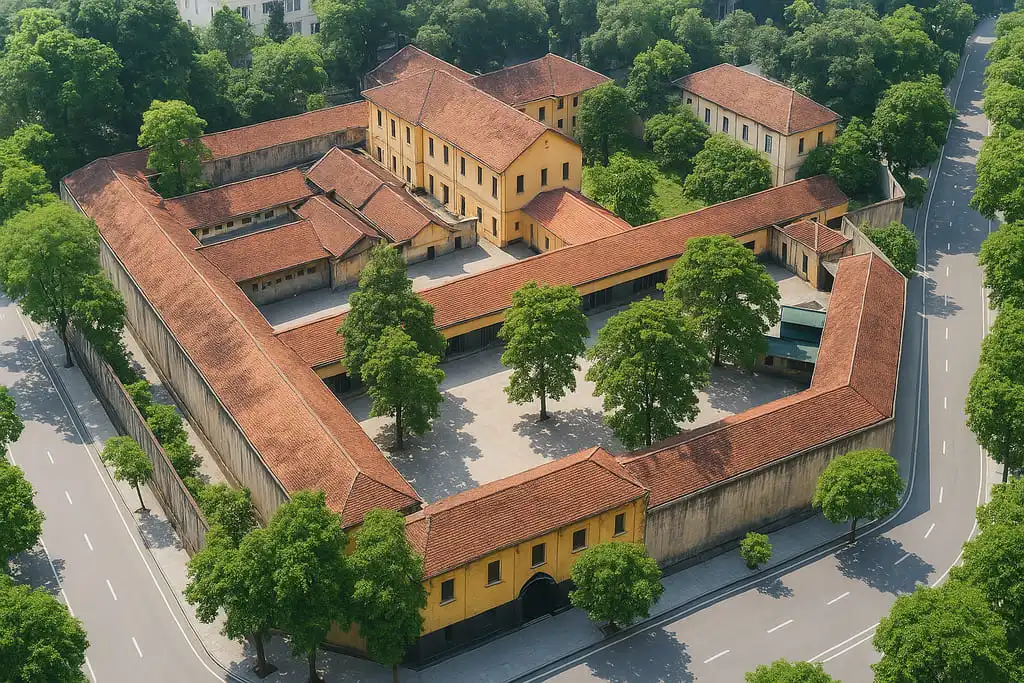Ghenh Da Dia and the million-year-old mystery that has yet to be solved
- Tuesday, Jun 10, 2025, 11:26 (GMT+7)
Ghenh Da Dia and the million-year-old mystery that has yet to be solved
Ghenh Da Dia appears like a forgotten banquet of nature, where giant stone plates seem to have been left behind by heaven and earth along the quiet coast of Phu Yen. Towering basalt columns shaped like hexagons and pentagons rise up beside the sea, arranged with such precision that they resemble an ancient mosaic crafted by invisible hands. From afar, they lie still beneath the wind, under shimmering sunlight, and surrounded by the salty breath of the ocean.
Located in An Ninh Dong commune of Tuy An district, Ghenh Da Dia does not rely on crowds or spectacle. It remains tranquil and profoundly captivating. Just standing there, watching the solemn rocks converse with waves and listening to the breeze slip between the narrow crevices, one begins to enter a slower rhythm where time stretches quietly in all directions.
The scene looks like a sculpture carved patiently by the Earth itself. Tens of thousands of basalt columns stand upright or lean gently into one another, forming a massive terrace along the shore. This formation began millions of years ago when molten lava flowed into the sea and met the cool water. The sudden change in temperature caused the lava to contract and crack into columns. The geological term is columnar basalt, yet at Ghenh Da Dia, the formations are so precisely aligned they seem almost man-made.
When sunlight strikes the surface, every stone becomes a shard of reflected sky. At dawn, the rocks take on hues of pink and lavender. At dusk, they glow with a golden sheen that spreads across the surface like poured honey. In those moments, travelers often fall silent, not out of awe alone, but because words feel unnecessary when nature has already spoken.
Stories handed down from the local people add layers of myth to this landscape. Some tell of a battle between the god of mountains and the god of the sea. In his fury, the mountain god scattered pieces of rock into the ocean, forming the strange stone field we now see. Others whisper of a hidden treasure that was cursed and turned to stone to protect a sacred secret. These tales do not ask to be believed. They are simply remembered, told beside fires, passed between generations, and carried in the wind that still brushes across the rocks.
Few visitors notice the quiet details between the columns. On calm days, small pools form between the stones. Within these pools, vibrant crabs skitter in the shadows and tiny fish flash silver beneath the still surface. Some of these pools are so clear and deep they resemble sky wells, holding miniature ecosystems where seaweed and coral live together in fragile harmony. In a few crevices, cold freshwater seeps from beneath the surface, a silent trace of underground springs that have not yet forgotten how to rise.
To experience Ghenh Da Dia in the early morning is to feel the ocean breathing. No checklist is needed. There is no rush. One can simply sit among the stones, let the wind pass through loose strands of hair, and watch the changing color of the sea. Each minute becomes a gentle meditation that stretches far beyond the boundaries of a trip.
The months from February to May offer the clearest skies, calmest tides, and most forgiving sunlight. These are the days when the rocks shine brightest. The road from Tuy Hoa city winds along the coast, revealing small villages, white sand dunes, and hills covered with casuarina trees. Every turn unveils a new frame, and every mile carries the softness of ocean breeze across the open road.
Near the rocky coastline, small fishing villages carry the rhythm of old Vietnam. Fishermen with sun-warmed skin repair nets under tamarind trees. Their laughter rings out like wind chimes. Roadside stalls serve fish grilled on open flames and rice paper rolls filled with steamed scad and fresh herbs. These meals may be simple, but their flavors are unforgettable. No lavish recipes, just honest ingredients pulled straight from the sea and cooked with care.
A visit to Ghenh Da Dia is not about sightseeing. It is about slowing down enough to notice. It is about learning to see without rushing, to listen without speaking. On a broad stone looking out toward the sea, there is no need to be anything more than present. The wind does not demand explanation. The waves do not ask questions. They just continue, as they always have.
Toward one end of the formation, there is a natural pathway that only reveals itself during low tide. Locals call it the path of the waves. When the moon is full, the ocean retreats and a string of stones appears, stretching gently into the water. Walking there feels like stepping into another realm where time thins and everything becomes quiet.
Some places may offer more entertainment or modern comforts. Ghenh Da Dia offers something else entirely. It offers stillness. It offers the feeling of being surrounded by something vast and alive. It reminds visitors that beauty is not always loud. Sometimes, it is found in persistence, in quiet design, in the way water smooths stone over centuries.
Before leaving, some may reach down and pick up a small shell or smooth pebble. Not as a souvenir, but as a sign that something gentle has been felt. A reminder that such a place exists where the rocks stand in silent formation, where the sky mirrors the sea, and where hearts find room to rest.
If someone asks whether it is worth going, perhaps no answer is needed. The name alone invites curiosity. And sooner or later, the heart will understand. The journey begins the moment the name is spoken, and the destination is already waiting.

 CHECKIN.VN
CHECKIN.VN








Share on